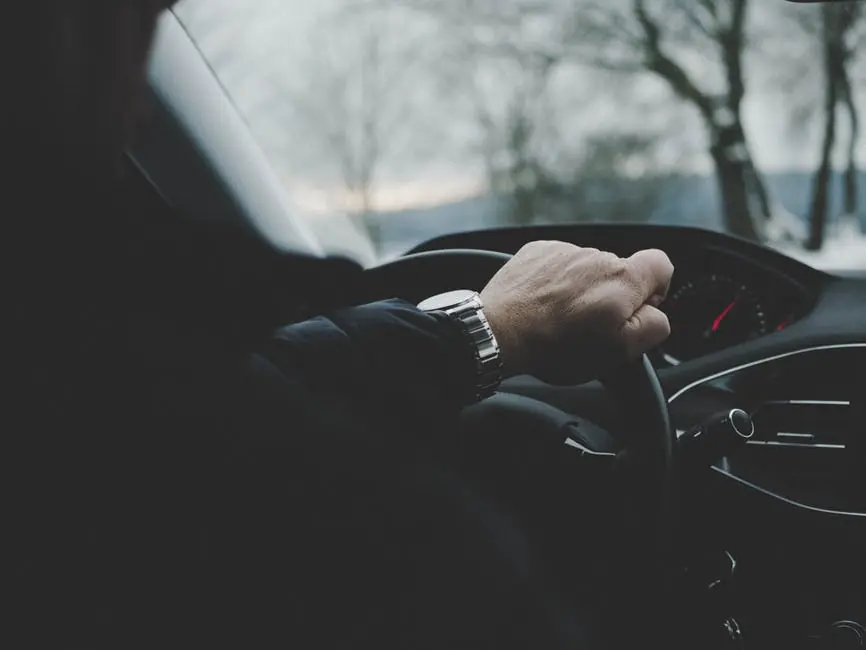New Study Reveals Drowsy Driving Risks
I’m Ed Smith, a Modesto car accident lawyer. New studies have revealed that drowsy driving may have caused more auto accidents than prior research, particularly at night. To learn more about these findings and how to avoid driving while sleepy, please read our detailed article below.
Drowsy Driving Statistics
The American Automobile Association (AAA) released a new study on drowsy driving on February 8, 2018. The study used video footage from everyday drivers in real accidents. Researchers examined videos of drivers’ facial expressions in the moments leading up to a collision. Scientific measures were used by researchers to determine the percentage of time an individual’s eyes remained closed to their level of drowsiness. The AAA study concluded that nearly 9.5 percent of all traffic collisions and 10.8 percent of crashes resulting in serious property damage involved drowsiness. This finding was significantly higher than previous results by government agencies of between one and two percent.
Effects of Drowsiness on Driving
Drowsy driving is a common problem in the United States. The National Sleep Foundation (NSF) reported that sixty percent of adults have driven while sleepy and one-third of drivers have even fallen asleep at the wheel. The effects of drowsiness are similar to those resulting from alcohol consumption as it can impair judgement, coordination and cognition of an individual. These impairments can affect the reaction time of a motorist and their ability to make good decisions, making them susceptible to auto accidents.
Signs of Drowsiness
Drowsy driving can be fatal. The National Highway Traffic Administration (NHTSA) reported that 846 parties were fatally injured in 2014 as a result of drowsy driving. It is important to recognize the signs of drowsiness while driving. These signs include:
- Finding it hard to keep your head up
- Driving errors such as drifting from your lane, hitting a road shoulder or tailgating
- Forgetfulness
- Frequent blinking, difficulty focusing and heavy eyelids
- Irritability or restlessness
- Missing exits or traffic signs
- Wandering Thoughts
- Yawning
Who is Most Likely to Drive Drowsy?
Some drivers are more likely to drive drowsy than others. The Centers for Disease Control and Prevention (CDC) has compiled a list of those who are most likely to drive while sleepy:
- Commercial Drivers
- Individuals Who Don’t Get Enough Rest
- Individuals With Untreated Sleeping Disorders
- Individuals Who Use Certain Medication
- Individuals Who Work Long Hours or Night Shift
Preventing Drowsy Driving
Feeling sleepy while driving is dangerous. Taking preventative measures when hitting the open road is a good idea to ensure the safety of yourself and your loved ones. Some of the things you can do to prevent drowsy driving include:
- Avoid traveling overnight
- Don’t get behind the wheel if you feel tired
- Get a good night’s rest before a long drive
- Schedule a rest break every 2 hours or 100 miles
- Switch drivers when traveling with friends or family
- Take a 15 minute nap or consume caffeine, if necessary
Consult with a specialist if you are always tired or experience irregular sleeping patterns.
Vehicle Technology and Drowsy Driving
Certain automakers have developed active safety systems to prevent drowsy driving and alert motorists who may be getting sleepy while behind the wheel. Some of these systems have even been designed to take control of a motor vehicle when driver action is insufficient to prevent or mitigate an auto accident. A list and detailed description of these safety systems include the following:
- Automatic Emergency Braking (AEB): This system first sends an alert to the driver to take evasive action for objects or vehicles ahead. If the driver fails to take action, the system may automatically apply the brakes to avoid a collision. Although this system may not always prevent a rear-end collision, it may reduce the severity of the crash.
- Forward-Collision Warning (FCW): This system is designed to alert a driver of an oncoming hazard and to take immediate action. Unlike the AEB system, the FCW system will not automatically apply the brakes for the driver.
- Lane-Departure Warning (LDW): This system alerts a driver if their vehicle is drifting out of its lane through sound, vibration or visual warnings. Please note that this system may not function as intended while traveling along roadways with faded lane markings, debris or snow.
- Lane-Keeping Assist (LKA): When drifting is detected, the LKA system can assist in steering a vehicle back into its lane. This system has been found to prevent accidents caused by drowsy driving, distracted driving and other negligent driving habits.
Although vehicle technology can be useful, it should never be viewed as a dependency in preventing or mitigating auto accidents.
Related Content by Ed Smith, Car Accident Lawyer in Modesto:
Modesto Car Accident Lawyers
I’m Ed Smith, a Modesto car accident lawyer. Auto accidents involving drowsy driving can lead to traumatic consequences. If you or a loved one has been injured in an accident, please call me at (209) 227-1931 for free, friendly advice. You may also contact me toll-free at (800) 404-5400.
Since 1982, I have assisted Modesto families with cases that involve personal injury and wrongful death to retrieve the compensation that they deserve.
For a list of comments and reviews by my former clients, please visit:
As a California member of the Million Dollar Advocates Forum, I have demonstrated verdicts or settlements for clients of $1 million or more for their personal injury claims.
See some of my Past Verdicts and Settlements.
Please visit my informative website: AutoAccident.com
Final Photograph: Image of Modesto Personal Injury Lawyer, Edward A Smith
:ds [cs 959] cv


